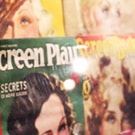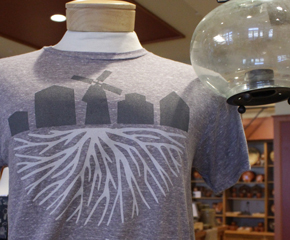Jazz Bowl, circa 1931
Add to SetSummary
24-year-old-artist Vilktor Schreckengost designed a punch bowl in 1930 depicting New Year's Eve festivities in New York City as a celebration of the Jazz Age. He was commissioned by Eleanor Roosevelt who was so pleased with it that she ordered two more copies. Three versions were produced; this is the third version, intended for mass-production, dubbed "The Poor Man's Jazz Bowl". …
24-year-old-artist Vilktor Schreckengost designed a punch bowl in 1930 depicting New Year's Eve festivities in New York City as a celebration of the Jazz Age. He was commissioned by Eleanor Roosevelt who was so pleased with it that she ordered two more copies. Three versions were produced; this is the third version, intended for mass-production, dubbed "The Poor Man's Jazz Bowl".
Viktor Schreckengost was just 24 years old in 1930 when this piece was designed. He studied at the Cleveland Institute of Art in the late 1920s, followed by a year studying ceramics in Vienna, where he was introduced to cutting-edge ideas in European art and design. When he returned to the United States he took a part time teaching position at his alma mater, the Cleveland Institute of Art and spent the balance of his time as a designer at Cowan Pottery in Rocky River, Ohio. The pottery was teetering on the edge of bankruptcy in early 1930, when a commission arrived from a New York Gallery for a New York-themed punch bowl. The cosmopolitan Schreckengost, who had visited New York, was given the opportunity to design the piece. Among other interests, Schreckengost was a jazz musician, and in his time in the City he frequented the jazz clubs. He later stated that the essence of New York represented the excitement and energy of jazz music; he wanted to present this in visual form on the bowl. "I thought back to a magical night when a friend and I went to see [Cab] Calloway at the Cotton Club [in Harlem] ... the city, the jazz, the Cotton Club, everything ... I knew I had to get it all on the bowl." Through a sequence of images, the bowl may be read as a night on the town, starting out in Times Square at 3:30 a.m., then on to Radio City Music Hall to see the Follies, culminating with the visit to the famous Cotton Club, symbolized with a drum head covered with the word, jazz, surrounded by musical instruments. Throughout the composition are images related to alcohol; cocktail glasses, wine or liquor bottles, and stylized images of human faces, several of whom are depicted with eyes formed by the letter x, a convention used in comic books to indicate intoxication. This was potentially scandalous considering that in 1930 laws prohibiting the consumption of alcoholic beverages was still in force.
The finished bowl was delivered to the New York Gallery and the individual who commissioned it. The patron was very pleased with the piece and immediately ordered two additional bowls. To Schreckengost's surprise and pleasure, this person turned out to be Eleanor Roosevelt, then First Lady of New York State, who commissioned the Bowl to celebrate her husband Franklin's gubernatorial reelection in 1930. Eventually, the piece made its way to the White House with the Roosevelts in 1933. The New York Gallery immediately placed an order for fifty more bowls. Unfortunately, Schreckengost's process was difficult to mass produce and Cowan pottery sought to simplify the original design, eventually producing two more versions. This is the third variant, known as "The Poor Man's Jazz Bowl", as it is slightly smaller than the original and the decoration in raised, rather than scratched into the surface. All three are decorated with a deep turquoise blue background, described by as "Egyptian". According to Schreckengost, the deep, penetrating blue gives the viewer a sense of the magic of the evening's festivities. No one knows how many Jazz bowls were made in total, we think fifty of the first version were produced, only a few of the unsuccessful second version, and perhaps, twenty of the third version.
Why is the Jazz Bowl so important? The Jazz Bowl succeeds in conveying the essence of the jazz age in New York through the use of cubist images, vibrant forms and contrasting colors. Further, there is sense of humor and directness in the piece that was new and influential in American decorative arts. Since the 1980s, this piece has been featured as a symbol of the Art Deco in America in major museum exhibits from the Brooklyn Museum's "Machine Age in America", (1986) to the Victoria and Albert Museum's "Art Deco", (2003).
Artifact
Bowl (Vessel)
Date Made
circa 1931
Creators
Schreckengost, Viktor, 1906-2008
Place of Creation
United States, Ohio, Rocky River
Creator Notes
Designed by Viktor Schreckengost at Cowan Pottery Studio in Rocky River, Ohio.

On Exhibit
at Henry Ford Museum in Your Place in Time
Object ID
83.185.1
Credit
From the Collections of The Henry Ford.
Material
Ceramic (Material)
Ceramic glaze
Color
Blue
Dimensions
Height: 8.25 in
Diameter: 13.563 in
Inscriptions
On face of bowl: FOLLIES/ DANCE/ GO. STOP/ VIKTOR SCHRECKENGOST







